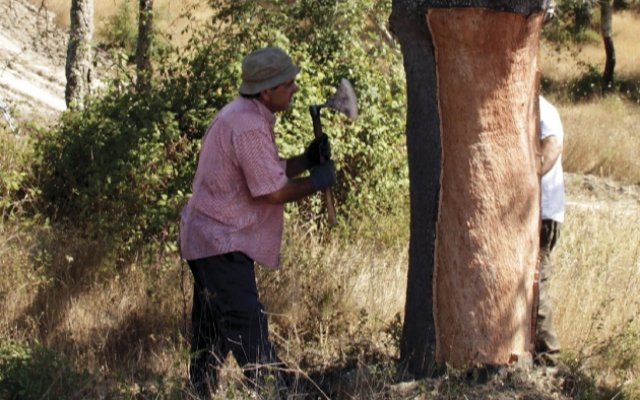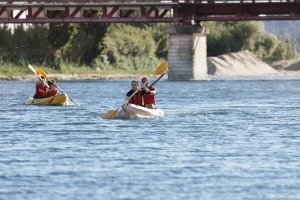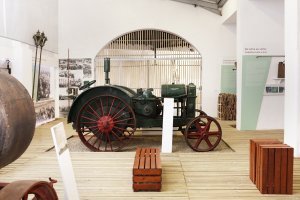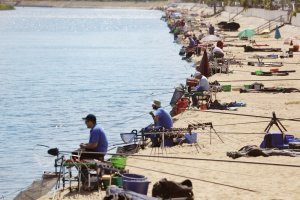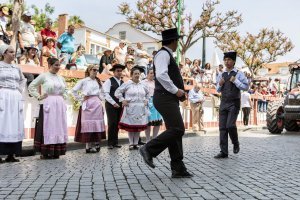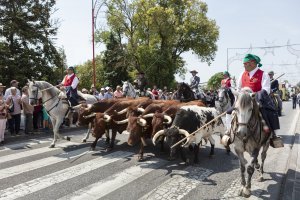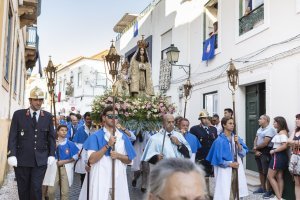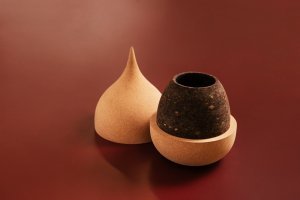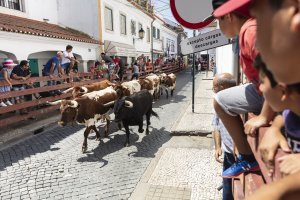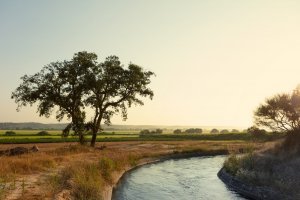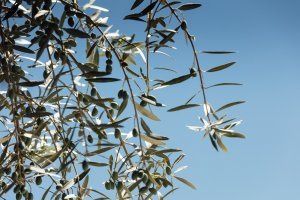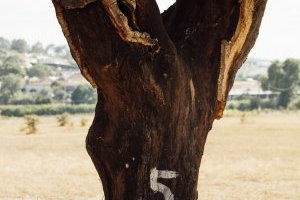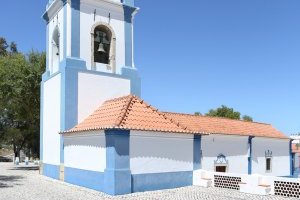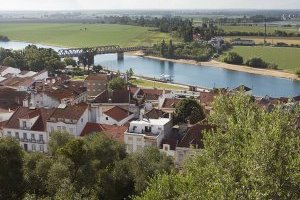ROUTES FROM THE VALLEY TO THE GROVE
Distance: 9.7 km; Duration: 3h
Degree of Difficulty: Easy
Trail departure point: Public garden of Vila Nova da Erra
Coordinates: 39.000642, -8.447794
This itinerary spans from the valley of the Sorraia River to the municipality’s vast cork oak forests, a noteworthy example of renewal and sustainable farming that allows Coruche to call itself the World Capital of Cork. Approximately half of the municipality consists of a mixed forest of cork oak and stone pine. The trees are an excellent source of high quality products such as wood, cork and pine nuts, so their economic worth is high. But they are valuable from an environmental and ecological point of view too because of the wealth of fauna and flora found here.
The trail is located in Vila Nova de Erra, a small town situated eight kilometres from Coruche. At the starting point, parking your car is easy and there is a café nearby.
Starting from the garden, go down the street for some 20 metres and turn left; go along São Francisco Street for some 60 metres, turning right and following the street that takes you out of the hamlet. Follow the asphalt road for about 140 metres and turn left on the first dirt road; continue for some 250 metres until you reach the fork in the road, where you take the left road. Continue for about another 100 metres, passing over the irrigation canal where you will find an asphalt road. Turn right and go along the shoulder of the road facing oncoming traffic for one kilometre; turn right, following another asphalt road for another 150 metres. In this area it is usually possible to see black kites (Milvus migrans).
This is where the longest section of the trail begins, on a dirt road and always gaining altitude.
Keep going straight ahead for some 700 metres and when the road forks, take the left-hand fork and keep going straight ahead for another 800 metres. Now take the right-hand fork and keep going for another 400 metres. Turn right now and keep going straight ahead on the main road for about two kilometres, ignoring all the small access points along the way. When the road forks, take the left-hand fork and then, 100 metres farther on, turn right; for the next 300 metres, at each of the next three forks in the road, always take the right-hand fork. This area hosts a good sized grove where you can observe numerous types of animals, including the great spotted woodpecker (Dendrocopos major).
In these forests, man and animals have lived peacefully side by side for centuries. Today, you can still pick mushrooms and asparagus that grow here, cut firewood, collect honey from the flowers that feed the bees and collect acorns from the oak trees to feed livestock.
After you pass a charcoal merchant’s, on your left side, keep going straight ahead and at the next junction, turn left along the main road. About 100 metres farther on, turn right, and then always keep going straight ahead along this road. After some 300 metres, you will reach the highest point of the trail, which will offer you beautiful panoramic views of the groves and part of the valley of the Sorraia River.
Here you will start the descent to Vale da Erra, where a brook flows. You now have to cross 700 metres of rocky ground on which you are to keep going straight ahead on the largest path; when you reach a junction with a sandy road, turn left, and after going for some 150 metres, turn right along a narrow path to the brook. On your left, there is a path that takes you to a suspension bridge. Take some time to rest and enjoy the location surrounded by a splendid and dense gallery forest. Keep going until you reach an asphalt road and turn left; a few metres ahead you will reach a villa with a cork oak tree integrated into the facade. This interesting detail reveals the owner’s respect for nature and the law.
In Portugal, cork oaks are a protected species and by law it is forbidden to cut them down. Keep going and once you reach the end of the asphalt, continue until you reach a fork in the road, choosing the one on your right. In this shady area you may find foxgloves (Digitalis purpurea) and on the part where the road has been excavated you can see large cork oaks, someof them with their roots exposed, allowing their entire root system to be analysed. These leafy and majestic trees can reach a height of 25 metres and live as long as 300 years. Most of the mature cork oaks in Portugal today are the result of natural regeneration. However, the perpetuation of the species via this process has been compromised in many places.
At the end of the descent you will find an asphalt road where you will turn right, going along the shoulder of the road for about 100 metres until reaching the irrigation canal of the Sorraia Valley agricultural water re-usage system. Managed by the Association of Irrigators and Beneficiaries of Vale do Sorraia, this system was created in 1951 and is over 100 kilometres long, irrigating an area of over 16,000 hectares.
Follow the canal along the left side, staying alongside it for one kilometre. On this section, which passes several vegetable gardens, you may see common yellow swallowtails (Papilio machaon).
When the canal crosses an asphalt road, turn right and begin the climb back up to the town. After some 150 metres, at the start of the built-up area, turn on to the street on your right and pass by the front of the church. Next, take the first street on your right, followed by the one on your left. From here, one more right turn will bring you back to the starting point.
